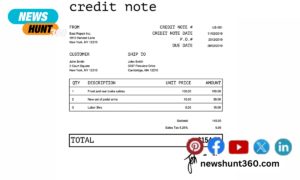Maintaining a Shopify store is more than just creating product pages and fulfilling orders from your clients. If you want customers to find you in the first place, you need to learn some SEO tactics to attract them.
Check out the following Shopify SEO tips to optimize your online store and make it more visible to your target customers:
Contents
- 1 Don’t forget to fill out your page titles and Meta descriptions.
- 2 Optimize your images.
- 3 Remove any duplicate content.
- 4 Make your site easy to navigate.
- 5 Set canonical tags.
- 6 Build high-quality backlinks.
- 7 Set up 301 redirects.
- 8 Encourage customers to leave reviews.
- 9 Keep a blog.
- 10 Pay attention to technical SEO.
- 11 Add your sitemap to Google Search Console.
- 12 Integrate Google Analytics into your Shopify store.
Don’t forget to fill out your page titles and Meta descriptions.
You should place a descriptive yet unique title that is 70 characters or fewer. Going beyond this will prod the search engine to shorten the page title.
Remember, you should place keywords near the beginning for better indexing. Don’t forget to make the title tag readable for buyers and search engines alike.
You should also have a Meta description per page – a brief text that shows after your website’s title tag. It provides a short description of your store, drawing more people to your website.
As you set meta-descriptions for your products, collections, or blog entries, make sure to use plain, understandable language.
Optimize your images.
Without good images, your online store would be useless. While it’s always good to use high-res photos, too crisp of an image can slow your loading times.
But you need not sacrifice quality for speed. Here are some techniques that can greatly help you out:
- Use a JPEG picture as it is smaller than a PNG.
- Use apps such as the TinyIMG SEO Image Optimizer to compress and optimize your photos.
- Add an alt text to your images and make sure it contains relevant keywords.
Remove any duplicate content.
Duplicate content means having the same thing as another webpage. It could be found in another store, although it could be within your site as well.
As this can pull your rankings down in search results, it pays to keep your store plagiarism-free. All you need to do is run plagiarism checkers from time to time to keep your store duplicate-free.
Having easy-to-find navigation links on your homepage gives your site visitors a clear direction so that they can move around your site with ease.
One of the most important links you should have on your homepage is your product and collection pages. Make them obvious by putting their links at the top of your homepage so that visitors can easily reach your most valuable pages.
Canonicalization declares one page or domain as the primary version when there are multiple versions of the same thing.
For instance, if a dress comes in different colours, you may want to set up a canonical page since all your product descriptions will be identical.
Setting canonical tags will prevent search engines from tagging your other pages as duplicate content, leading to poor search engine rankings.
Build high-quality backlinks.
Getting links from trusted websites increases your store’s popularity and trustworthiness, thus boosting your Google rankings.
Some ways to generate backlinks include listing your Shopify store on other commercial websites, asking for links from your manufacturer and other store owners, and creating engaging and shareable content.
Set up 301 redirects.
301 redirects allow you to tell search engines that a specific page is no longer available and has permanently moved to another page.
It’s particularly useful when you don’t know when you can restock. It also prevents your visitors from being redirected to a 404 Not Found page, which can seriously hurt your search engine rankings.
Encourage customers to leave reviews.
Reviews help you increase revenue and boost your product review sales to your Google search listings.
A simple app like Shopify Product Reviews allows you to add a review feature to your store.
Keep a blog.
Blogging is a great way to build an audience, increase your visibility and authority, and drive more organic traffic to your Shopify store. It is also an excellent way to earn backlinks, which are integral to your website’s technical SEO success.
You can activate it by going to Online Store – Blog Posts – Manage Blogs – Add Blogs.
Pay attention to technical SEO.
Your website’s technical aspects affect your search engine rankings. It’s all about making your website faster while making it understandable and crawlable for search engines.
You can do this by optimizing site speed, choosing a mobile-responsive theme, having a schema mark-up and sitemap, fortifying your website security, and verifying your site on Google Webmaster.
Add your sitemap to Google Search Console.
The sitemap is a file that tells search engines what to crawl or index on your website.
While Shopify automatically generates a sitemap.xml file for your store, you should still submit it to Google Search Console and Bing Webmaster Tools so these search engines can crawl and index your store.
Integrate Google Analytics into your Shopify store.
You’d want to set a benchmark every time you strive to improve your Shopify SEO. In that case, you should use Google Analytics to track your website traffic and analyse your customer behaviour.
Doing so allows you to tweak your SEO strategy based on real data collected on your site.
With these 12 Shopify SEO tips, you’re sure to be one step ahead of your competitors when it comes to the SEO game.




